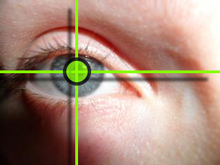Many people avoid spicy foods. Perhaps they can’t bear the taste, or perhaps they can’t bear the consequences spicy foods have on their stomaches. As a person with Indian parents, I have been around spicy food my whole life. Because of this, I have noticed that other people that come from places with a considerably hotter climate eat considerably hotter food. This, apparently, is no coincidence. While many of us hailing from these climates have a high threshold to spice, we would all fall prey to the hottest pepper in the world: the bhut jolokia chili pepper, also known as the ghost pepper. Discovered by Paul Bosland, professor of Horticulture at New Mexico State University, the pepper rates at 855,000 to 1,041,427 Scoville heat units, a measurement of spiciness. That’s 107 to 417 times hotter than a jalapeño and 10 times hotter than a habañero.
Hypothesis: Spicy foods can have a dramatic effect on the human body, possibly to the extent of killing you.
Studies: Bosland made claims that a 1980 research study calculated that 3 pounds of pepper in powder form could kill a 150 pound person. A man Ruari Barratt was hospitalized after eating a burger laced with in concentrated piri piri sauce from India. In the most significant case, a San Francisco man who entered a contest at a local restaurant ingested a pureed ghost pepper atop a hamburger. He began immediately vomiting after eating the burger and could not stop, landing him in the emergency room. He developed chest and stomach pain, presumably because he could not stop vomiting. A CT scan showed a torn esophagus.
Conclusion: It is not the pepper itself that can cause all this damage, but rather the reaction to the pepper. The hole in the man’s esophagus was not burned simply by coming in contact with the ghost pepper, it was a tear as a result of the frequent retching a vomiting from ingesting the pepper itself. So perhaps for a person who has little to no reaction to spicy food, they would be completely fine after eating one of these red hot peppers. While people feel hot as the take a bite of spicy food, there is actual no change in temperature. This is because false heat sensation is capsaicin’s ability to latch onto pain receptors known as TRPV1, which are normally only activated in the presence of heat. Once the heat-sensitive receptors are triggered into activation, your brain is made to believe you are actually close to a source of heat.
Works Cited
http://www.medicaldaily.com/can-eating-worlds-hottest-pepper-kill-you-how-spicy-foods-affect-body-330042
http://www.livescience.com/56532-ghost-pepper-ruptured-esophagus.html
http://nypost.com/2015/08/04/eating-ghost-peppers-could-kill-you/
http://www.livescience.com/16556-spicy-food-fatal-chili-peppers.html














